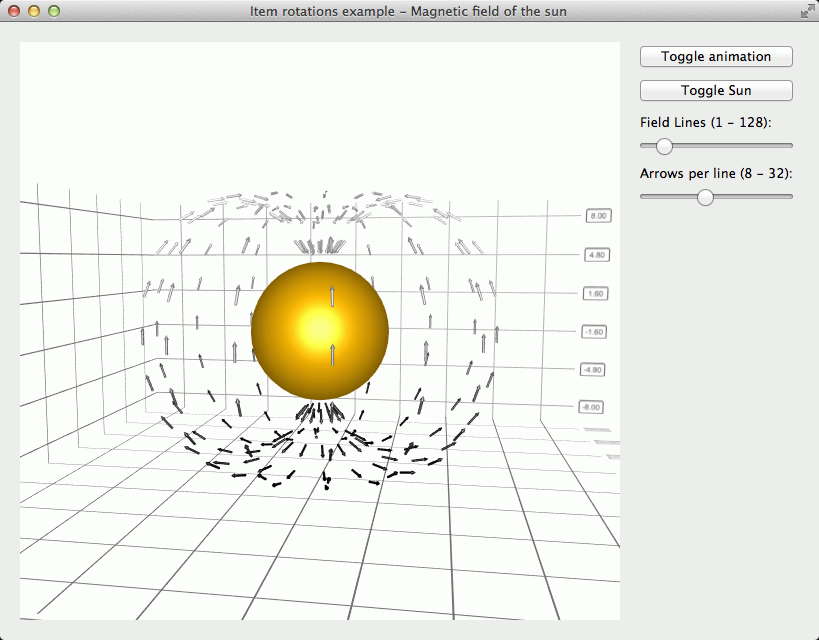Using rotated scatter items.
This example shows how to do the following:
For more basic example about using Qt Data Visualization graphs, see 条形范例 .

要运行范例从 Qt Creator ,打开 欢迎 模式,然后选择范例从 范例 。更多信息,拜访 构建和运行范例 .
In this example we want to orient the arrow items tangentially to the origin. This requires rotating them, which can be achieved by specifying rotation quaternion to each item:
QQuaternion yRotation = QQuaternion::fromAxisAndAngle(0.0f, 1.0f, 0.0f, horizontalAngle * radiansToDegrees); QQuaternion zRotation = QQuaternion::fromAxisAndAngle(0.0f, 0.0f, 1.0f, verticalAngle * radiansToDegrees); QQuaternion totalRotation = yRotation * zRotation; ptrToDataArray->setRotation(totalRotation);
Since the items need to be rotated along two axes, we define two rotation quaternions, one for Y-axis and one for Z-axis, and then multiply these together to get the total rotation, which we set to the data item.
The narrow arrow mesh we use for magnetic field arrow items is not a standard mesh. Instead we supply our own
narrowarrow.obj
file which contains the object definition for the mesh in
Wavefront
obj format:
m_magneticField->setMesh(QAbstract3DSeries::MeshUserDefined); m_magneticField->setUserDefinedMesh(QStringLiteral(":/mesh/narrowarrow.obj"));
Setting the color style to range gradient in a series means that the item is colored according to its relative Y-value on the visible Y-coordinate range. We want the arrows on the bottom part of the graph to be darker and gradually get lighter higher they are, so we define a range gradient with black color at the position 0.0 and white color at the position 1.0:
QLinearGradient fieldGradient(0, 0, 16, 1024); fieldGradient.setColorAt(0.0, Qt::black); fieldGradient.setColorAt(1.0, Qt::white); m_magneticField->setBaseGradient(fieldGradient); m_magneticField->setColorStyle(Q3DTheme::ColorStyleRangeGradient);